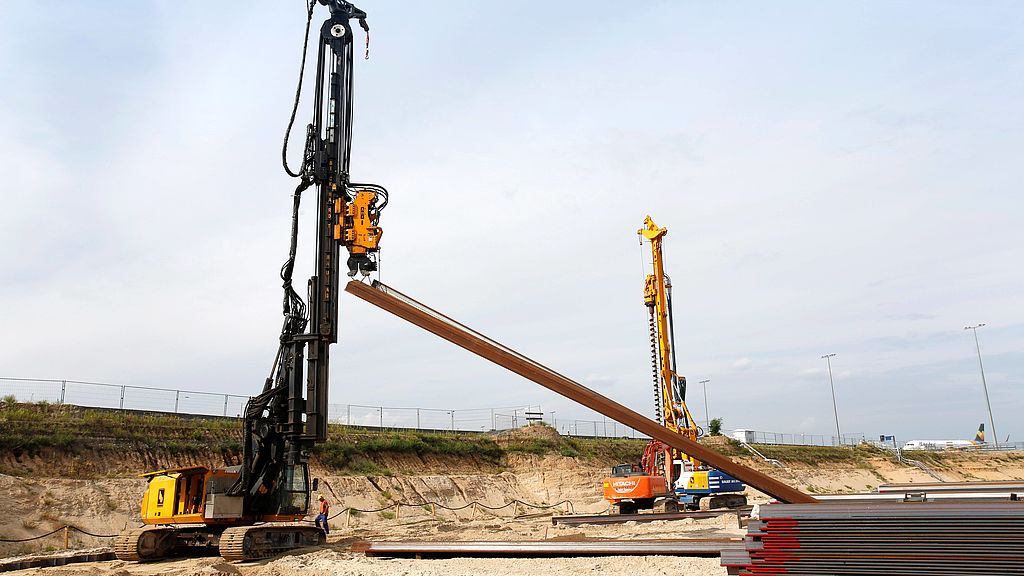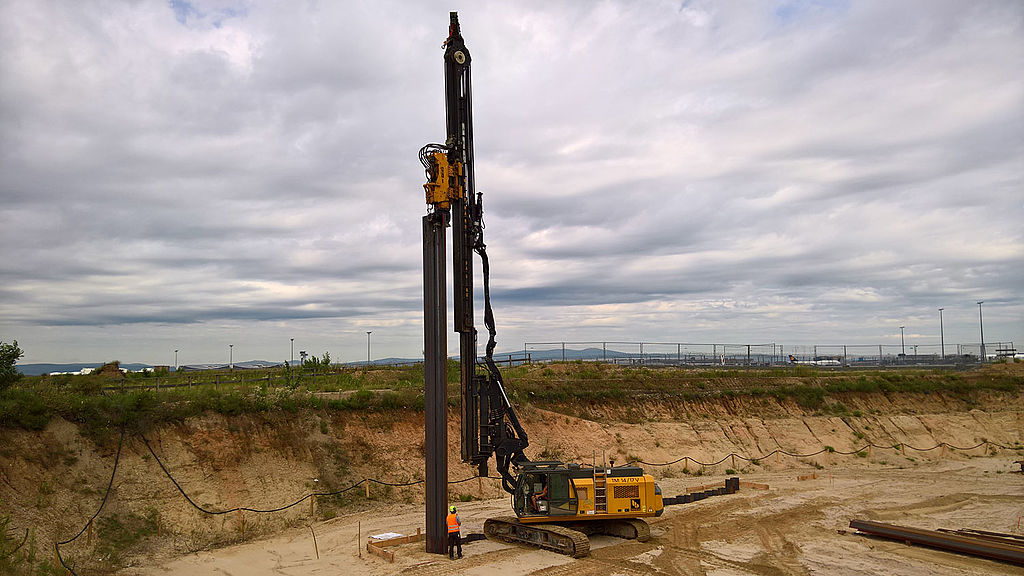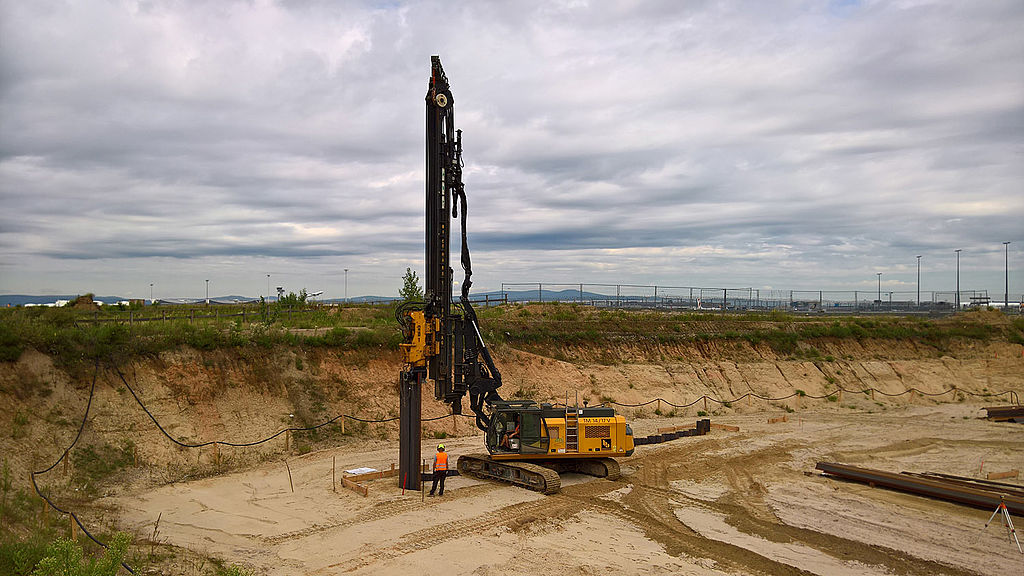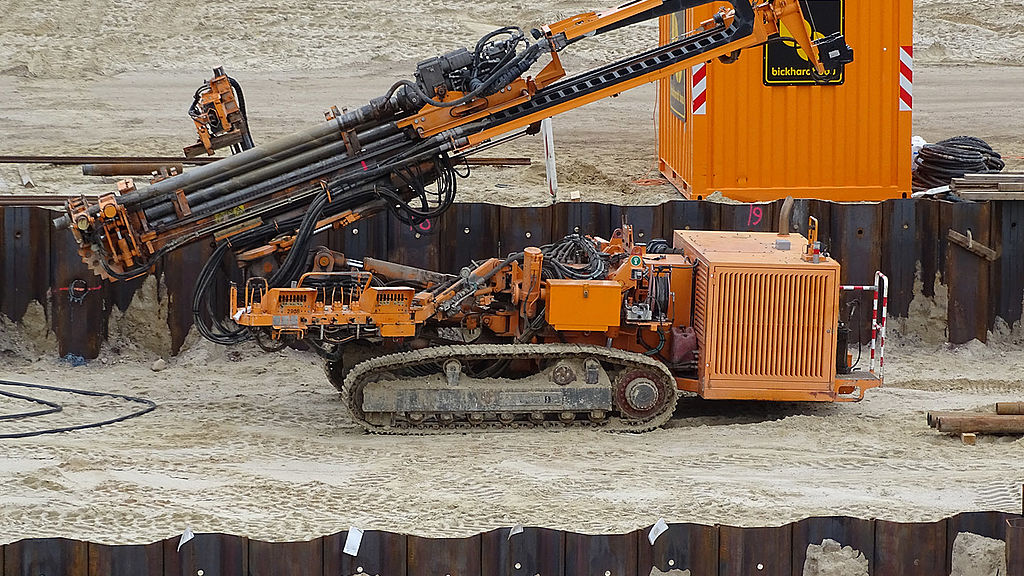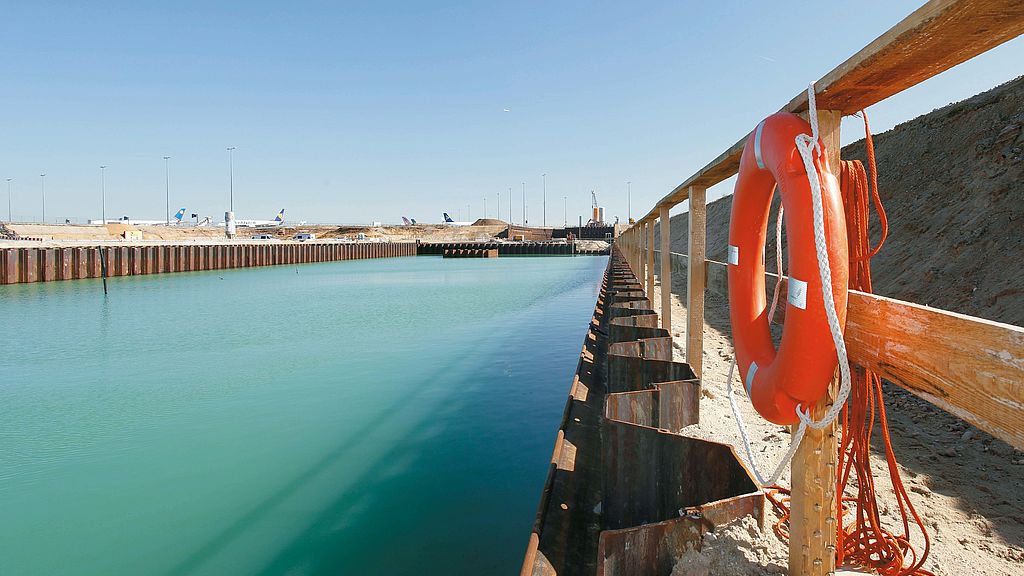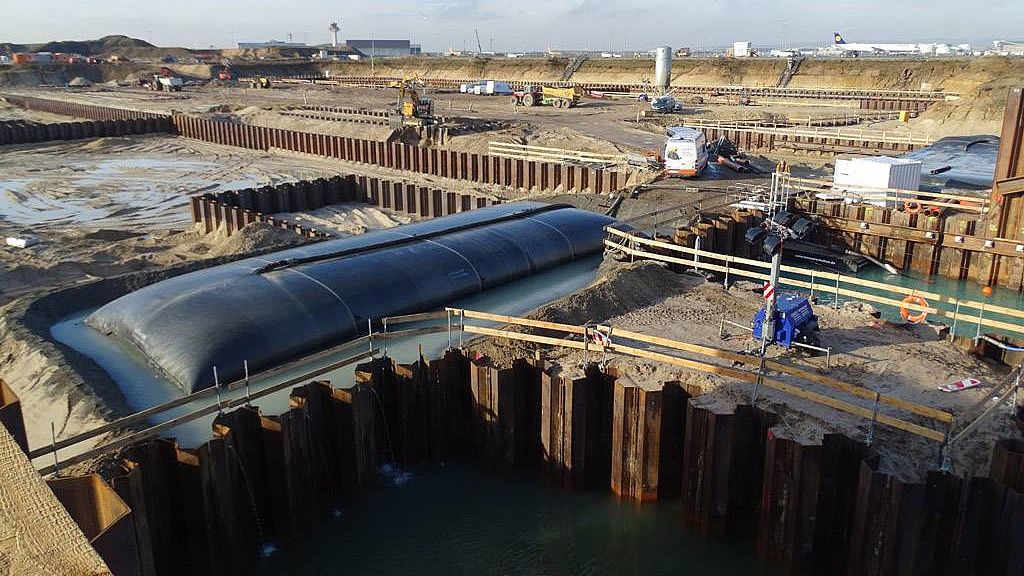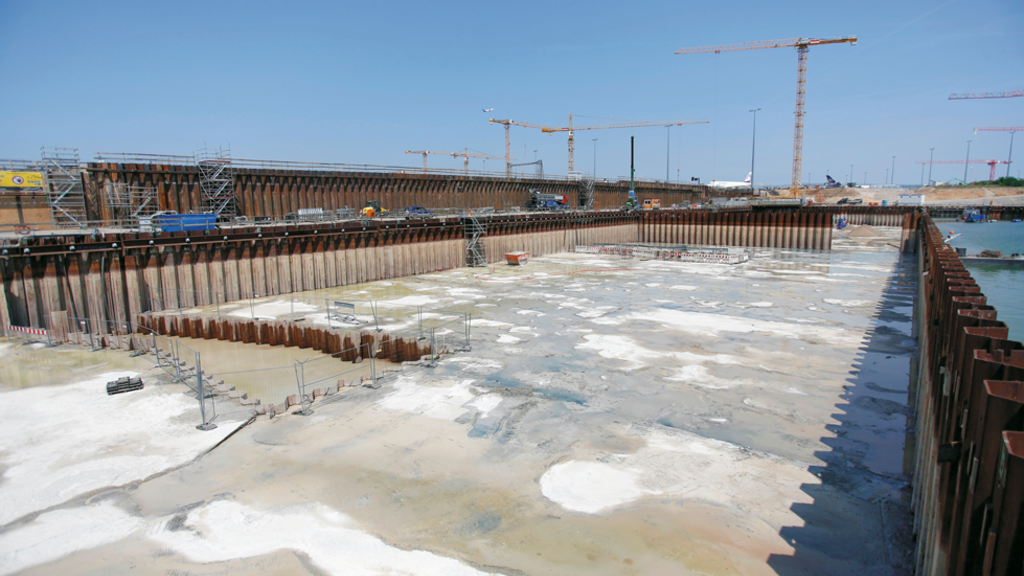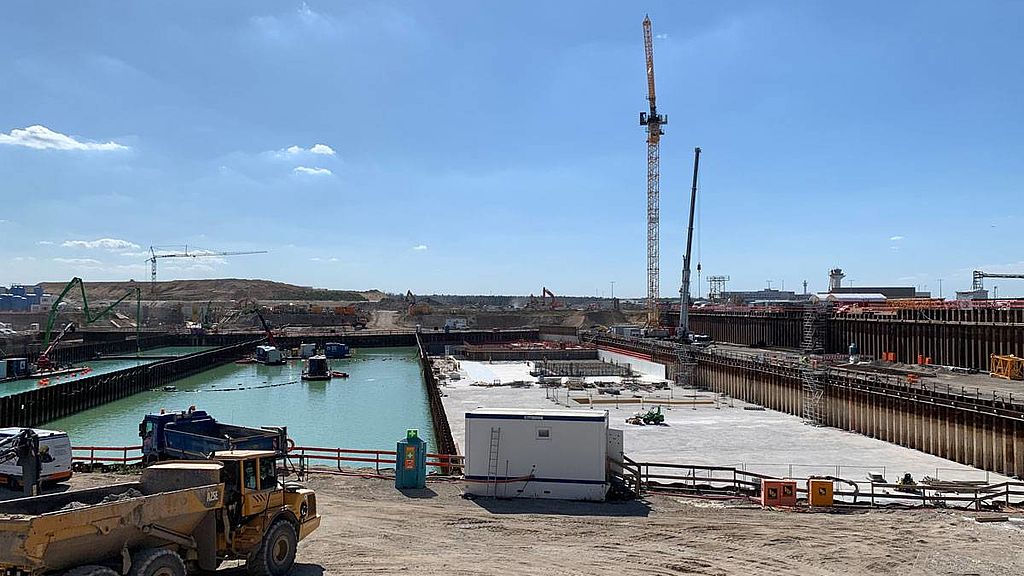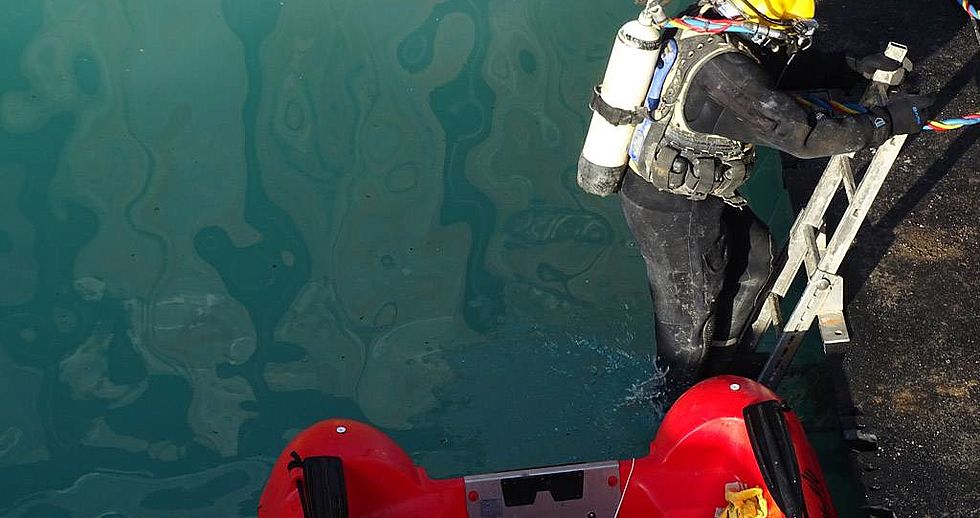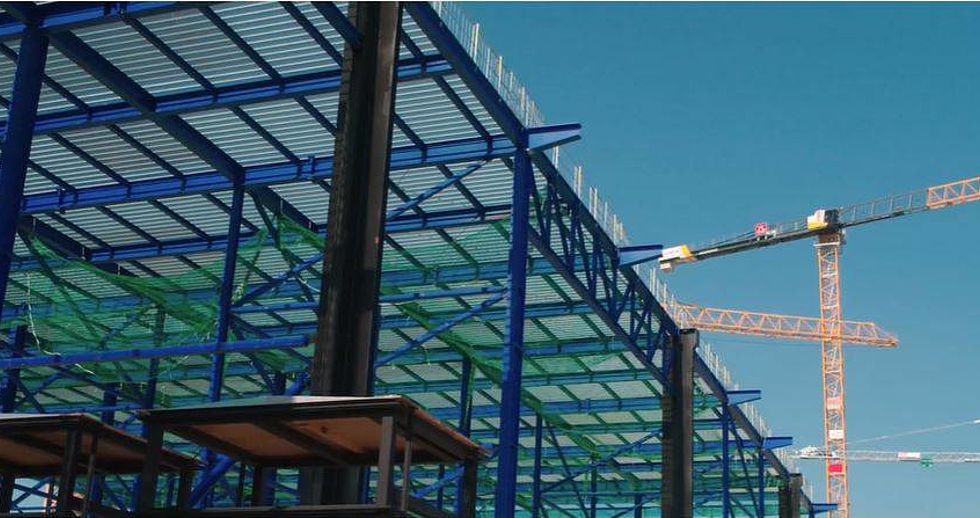From sand across water to concrete
It takes between 30 and 50 days for the concrete to cure completely under water. Then the last phase of the special underground engineering work can begin: pumping out the groundwater and purifying it in a multistage process. It is then returned to the earth elsewhere via a specially installed infiltration system that guides it into deeper soil layers. While this is going on, it’s important to continually check the groundwater and systems to ensure seamless quality control.


